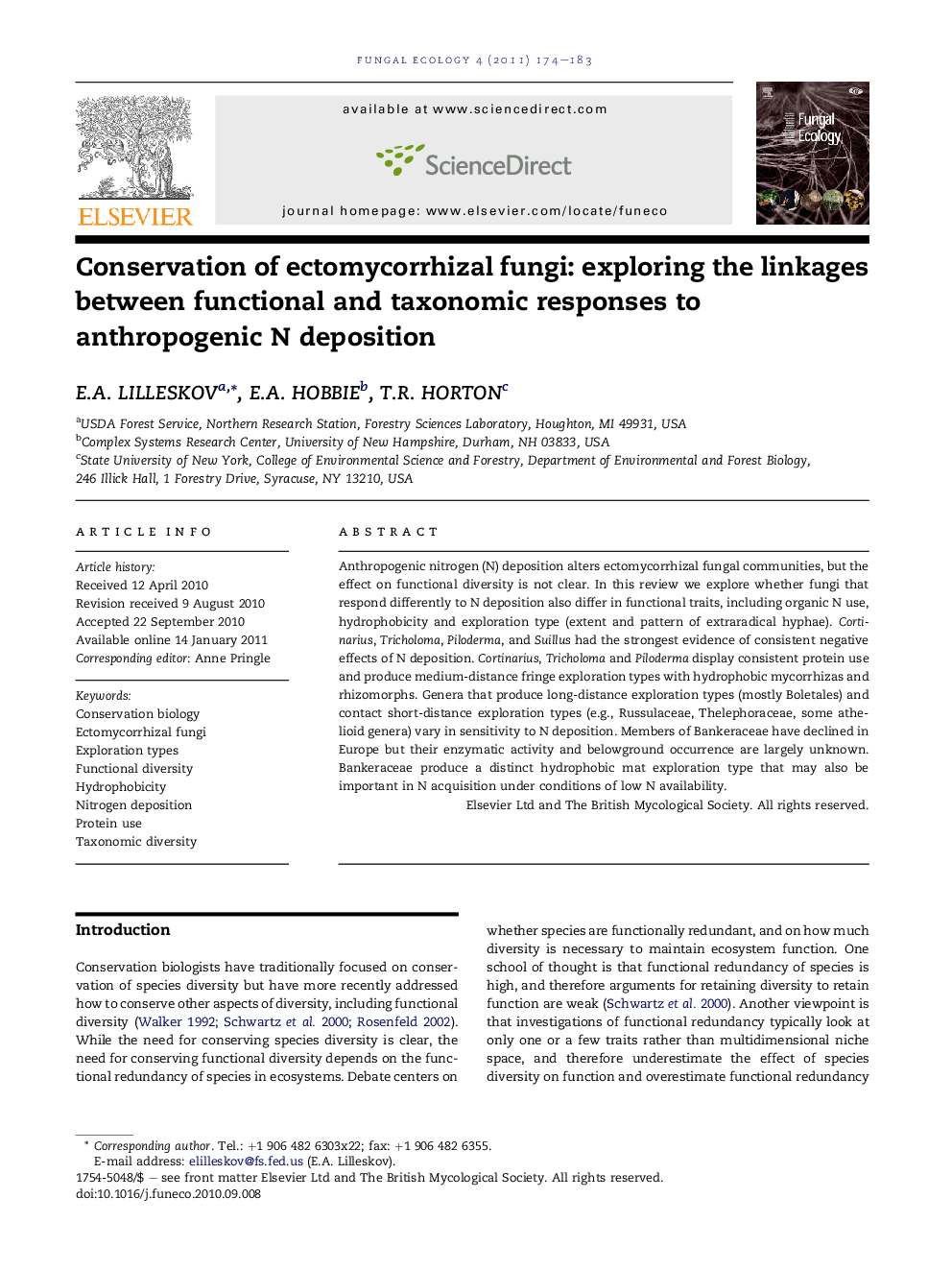| Article ID | Journal | Published Year | Pages | File Type |
|---|---|---|---|---|
| 2054537 | Fungal Ecology | 2011 | 10 Pages |
Anthropogenic nitrogen (N) deposition alters ectomycorrhizal fungal communities, but the effect on functional diversity is not clear. In this review we explore whether fungi that respond differently to N deposition also differ in functional traits, including organic N use, hydrophobicity and exploration type (extent and pattern of extraradical hyphae). Cortinarius, Tricholoma, Piloderma, and Suillus had the strongest evidence of consistent negative effects of N deposition. Cortinarius, Tricholoma and Piloderma display consistent protein use and produce medium-distance fringe exploration types with hydrophobic mycorrhizas and rhizomorphs. Genera that produce long-distance exploration types (mostly Boletales) and contact short-distance exploration types (e.g., Russulaceae, Thelephoraceae, some athelioid genera) vary in sensitivity to N deposition. Members of Bankeraceae have declined in Europe but their enzymatic activity and belowground occurrence are largely unknown. Bankeraceae produce a distinct hydrophobic mat exploration type that may also be important in N acquisition under conditions of low N availability.
